57,000 Tonnes Of Hazardous Materials Finally Dealt With At Dounreay
6th April 2012
Dounreay today completed the destruction of one of the most hazardous legacies of Britain's earliest atomic research.
A purpose-built chemical plant processed the last of 57,000 litres of liquid metal lifted from the primary cooling circuit of the experimental fast breeder reactor.
The coolant - an alloy of sodium and potassium (NaK) - was a major chemical and radiological hazard. An estimated 1000 trillion becquerels of caesium-137 was removed from the coolant during the chemical process that turned the 57 tonnes of liquid metal into 20,000 tonnes of salty water and took four years to complete.
Scotland's Cabinet Secretary for the Environment Richard Lochhead saw the last batches being processed.
He said: "This is a tremendous achievement and another example of how the highly skilled Dounreay workforce is delivering a world-class clean-up operation at one of the most complex nuclear sites in Europe.
"The Scottish Government welcomes today's announcement that Dounreay have successfully destroyed 57,000 litres of highly radioactive liquid metal from the Dounreay Fast Reactor."
The Nuclear Decommissioning Authority said it was "extremely pleased" the liquid metal no longer posed a hazard.
"This was very high on the list of hazards we wanted reduced across our whole estate," said Nigel Lowe, head of the NDA's Dounreay programme. "It's a significant achievement for Dounreay and joins a long list of examples whereby the site has delivered on key objectives and technical challenges."
The reactor - built in the 1950s - was one of only two ever built in Britain to run on liquid metal. Two cooling circuits connected by heat exchangers were filled with more than 161,000 litres of liquid metal.
More than 100,000 litres of NaK from the secondary circuit was destroyed when the reactor shut down in 1977.
Work on the primary circuit - a labyrinth of pipes 9 kilometres in length - stopped in the early 1980s when higher levels of radioactive contamination were detected.
The primary circuit contained 57,000 litres of NaK that flowed over the fuel pins in the reactor core.
The "open vent" design of the fuel cladding allowed the liquid metal to come into direct contact with the fuel, contaminating the primary coolant with huge levels of soluble radioactive caesium. Radiation measurements of the primary coolant showed the presence of 1000 trillion becquerels of caesium-137.
The high level of radioactive contamination added to the chemical hazard of alkali metal that reacts in contact with air or water. Its destruction remained on hold until a decade ago when work started on the construction of a purpose-built clean-up plant. The plant was designed to lift the liquid metal in small batches, neutralise the alkalinity with acid and extract the caesium via ion exchange.
In September 2007, the first of a total of 354 batches was lifted from the reactor. Each batch underwent chemical neutralisation to convert the alkali metal to a salty water before being passed through ion exchange columns that trapped the caesium. Designers thought the plant would decontaminate the effluent by a factor of 1000. Decontamination rates of up to 4 million were achieved during the operation, reducing levels of radioactivity in the effluent to below the limit of detection.
The resin columns used to trap the caesium will now be cemented up and managed as higher-activity waste.
"It's been a fantastic achievement by the whole team to deliver this milestone a year ahead of schedule and to higher environmental standards than anyone thought possible at the design stage," said Andy Swan, the engineer in charge of the reactor decommissioning.
"This stuff was highly volatile and highly radioactive. The chemical and radiological hazards combined to make this a real danger to the workers involved, so we needed to be certain they were protected at every step of the process until the hazard was destroyed. Their safety record throughout this operation was excellent."
Destruction of the liquid metal was among the strategic national priorities of the Department of Energy and Climate Change, which sponsors the Nuclear Decommissioning Authority.
With the reactor vessel empty of liquid metal, attention now turns to cleansing the residual traces from the primary circuit pipework and destroying small pockets in other vessels. When complete, a robotic arm will reach into the reactor vessel and begin removing the burst fuel pin and almost 1000 breeder elements still positioned around the core.
Related Businesses
Related Articles
TAE Technologies and UKAEA partner to commercialise fusion tech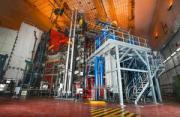
Joint venture to develop neutral beams for fusion and non-fusion applications, creating high-skilled jobs and establishing a critical supply chain. TAE Technologies, a leading US private fusion energy firm with over 25 years at the forefront of scientific innovation, today announces a bilateral and reciprocal investment commitment with the United Kingdom's national fusion laboratory, the UK Atomic Energy Authority (UKAEA) to commercialise TAE's proprietary particle accelerator technology for the global market.
Buried Hazards, Unfinished Business - What the NDA's 2025 Progress Report Really Tells Us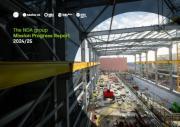
The Nuclear Decommissioning Authority (NDA) has released its 2025 Mission Progress Report is a slightly sprawling document chronicling one of the UK's most complex environmental undertakings. The safe dismantling of its early nuclear legacy.
New recruit officers join the Civil Nuclear Constabulary
The Civil Nuclear Constabulary (CNC) welcomes its newest recruits. The CNC hosted two passing out parades for the graduating Authorised Firearms Officers (AFOs) of Initial Foundation Programme (IFP) 106.
Dounreay's next generation of talent honoured by apprentice award
Nuclear Restoration Services Dounreay's Kate Thomson has won Modern Apprentice of the Year at the Highlands & Islands Apprenticeship Awards in Inverness. Kate, who is in the second year of her apprenticeship in commercial and quantity surveying, said she was thrilled by the honour.
Taskforce calls for radical reset of nuclear regulation in UK
Nuclear Regulatory Taskforce publishes final report and calls for radical reset of overly complex nuclear regulatory system. An overly complex nuclear regulatory system has contributed to the "relative decline" of the UK's ability to deliver faster and cheaper nuclear projects.
NDA working with private developer to accelerate Chapelcross Hub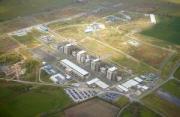
The NDA group has announced it's working with CX Power as the strategic developer to support the delivery of the green energy hub masterplan at Chapelcross. The Nuclear Decommissioning Authority (NDA) group has announced it's working with CX Power as the strategic developer to support the delivery of the green energy hub masterplan at Chapelcross, a programme set to transform the region.
Funding approved for Wick Harbour port consultant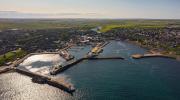
A specialist ports consultant has been appointed to develop a long-term strategic plan for Wick Harbour Authority (WHA) in Caithness. WHA has secured £47,775 from Highlands and Islands Enterprise (HIE) and the Nuclear Restoration Services, NRS Dounreay towards the cost of the services.
NDA announces £1 million funding to accelerate clean energy in West Cumbria
NDA announces £1 million investment to develop masterplan for clean energy development on land adjacent to Sellafield. The Nuclear Decommissioning Authority (NDA) has announced today it's investing £1 million of funding to develop the masterplan for a clean energy development on land adjacent to Sellafield, known as Pioneer Park.Fallon Campbell From Melvich Near Thurso Named As Apprentice of the Year At Awards In London
Rising star from North Scotland honoured at event to celebrate brightest and best in industry. An electrical apprentice from North Scotland is celebrating after being recognised for her contribution to industry at the 13th annual Engineering Construction Industry ECI Training and Development Awards in London.
The NDA Group Graduate Programme: more than a job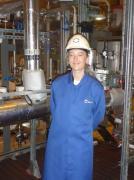
The NDA group graduate scheme offers far more than just a stepping stone into the nuclear industry; it's a chance to grow professionally, explore new places, and become part of a supportive community. Nuala Ledward, Assurance and Performance Graduate, shares how her secondment to Dounreay brought these benefits to life.
